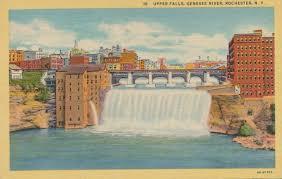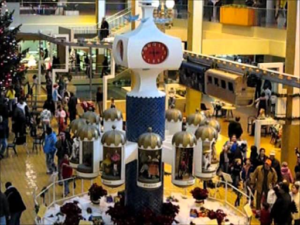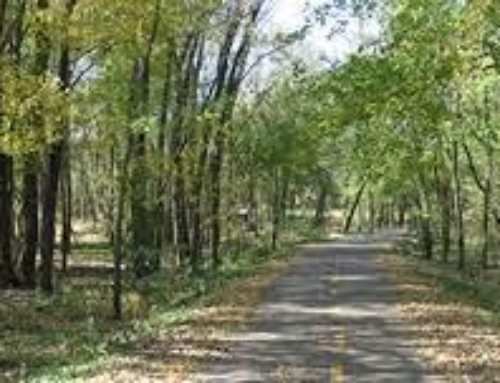My Journey Upstream To Determine The Source Of River Babies Began In My Home Town Of Rochester, New York.
Like most children, I had a sense of regional pride. Being from Upstate New York was a privilege possessed by the lucky few.
 Rochester, like all American cities, was an exceptional city with a storied past. It began when Colonel Nathaniel Rochester purchased a 100-acre lot and began to sell the land in small lots in 1811. With the completion of the Erie Canal in 1825, which connected Albany to Buffalo, Rochester became one of America’s first boom towns, garnering the moniker the “Young Lion of the West.” Rochester was incorporated as a city in 1834 after experiencing a population explosion that more than quadrupled its population to 12,250 between 1820 – 1834.
Rochester, like all American cities, was an exceptional city with a storied past. It began when Colonel Nathaniel Rochester purchased a 100-acre lot and began to sell the land in small lots in 1811. With the completion of the Erie Canal in 1825, which connected Albany to Buffalo, Rochester became one of America’s first boom towns, garnering the moniker the “Young Lion of the West.” Rochester was incorporated as a city in 1834 after experiencing a population explosion that more than quadrupled its population to 12,250 between 1820 – 1834.
After the completion of the canal, flour mills began to pop up along the area known as the “Upper Falls” of the Genesee River. By 1838, Rochester was the world’s leading flour producer, earning it a new nickname: “Flour City.”
Later in the century, the Genesee River powered a manufacturing boom. Rochester became the birthplace of manufacturing giants Eastman Kodak, Bausch & Lomb, and Xerox. These three corporate giants helped Rochester to become a global center for science, technology, research and development. This status has been aided by the presence of the University of Rochester and Rochester Institute of Technology, both universities were renowned for their research programs. By the 1950’s, Rochester, New York, became the Silicon Valley of precision instruments. Several other major corporations originated in Rochester, including Ragu, French’s, Western Union, Wegmans, and Paychex.
Rochester has deep religious roots. During its 1830’s boom time, Rochester experienced one of the nation’s biggest Protestant revival movements, led by Charles Finney. Taverns and theaters closed; new churches were opened. Rochester’s revival was one of the sparks that inspired the revivals of the Second Great Awakening.
Rochester was also known for being a city that opposed slavery. It served as Frederick Douglass’ home between 1847 – 1872. It was from the basement of the Memorial AME Zion Church in Rochester that he published his influential abolitionist newspaper, the North Star. Rochester also played an important role in the Underground Railroad. Every year, Kelsey’s Landing along the Genesee River served as the last U.S. stop for an estimated 150 formerly enslaved people, before they boarded ships to Canada.
Rochester was also home to the legendary suffragist, Susan B. Anthony, from 1866 to 1906. Her home became Rochester’s first National Historic Landmark. Rochester’s fascinating history is an understandable source of city pride.
 My family relocated to Rochester in 1965. We moved there right after Midtown Plaza was constructed in 1962. Midtown Plaza was the first indoor urban mall in the United States. It was famous for its Clock of Nations which shoppers would gather around each hour and half-hour to watch animated dolls dance to music of twelve nations. As a child, I was mesmerized by the beautiful music and the dancing marionettes. The Plaza also had an indoor monorail for children that circled the entire mall. I begged to ride it every time we came.
My family relocated to Rochester in 1965. We moved there right after Midtown Plaza was constructed in 1962. Midtown Plaza was the first indoor urban mall in the United States. It was famous for its Clock of Nations which shoppers would gather around each hour and half-hour to watch animated dolls dance to music of twelve nations. As a child, I was mesmerized by the beautiful music and the dancing marionettes. The Plaza also had an indoor monorail for children that circled the entire mall. I begged to ride it every time we came.





